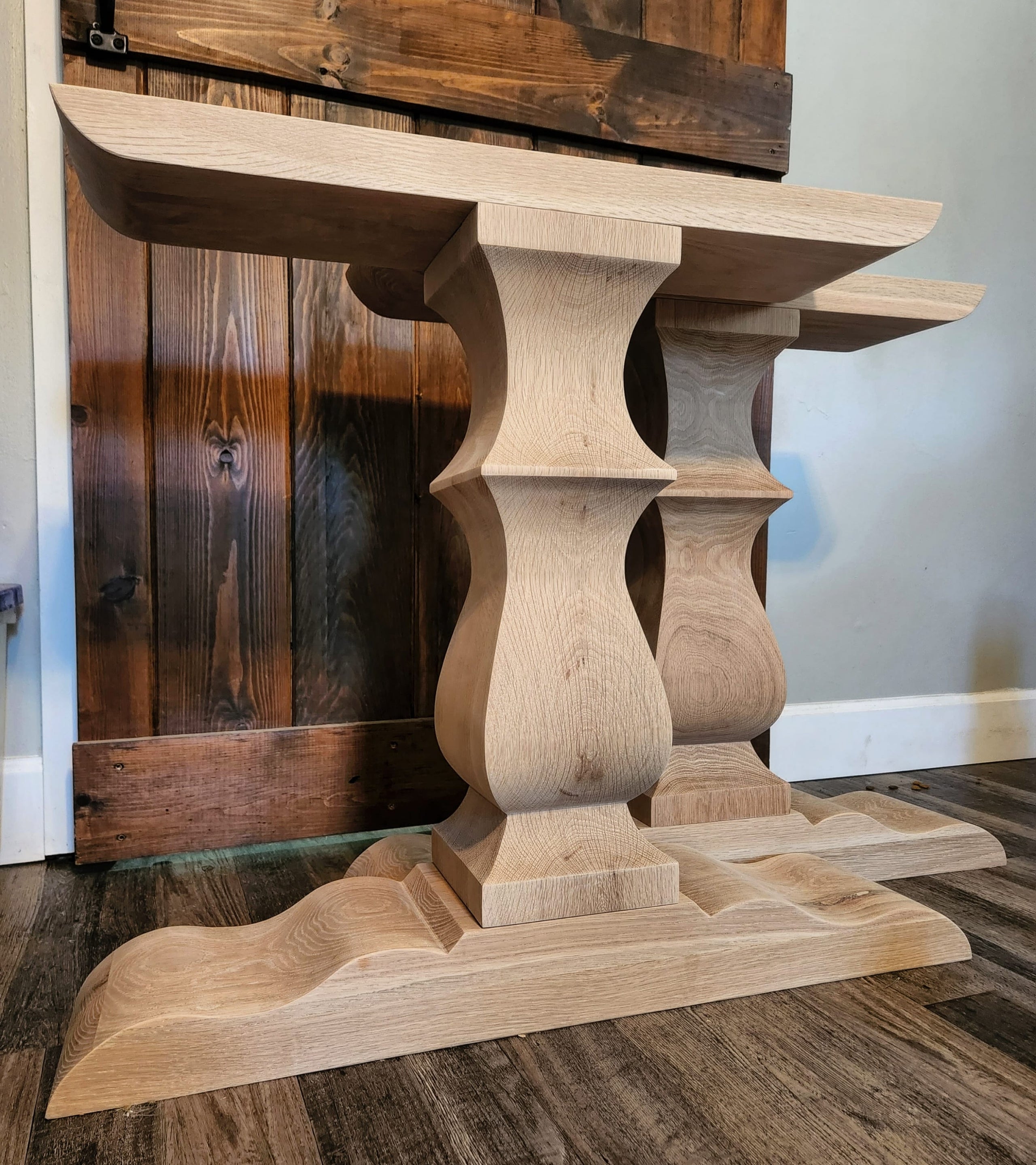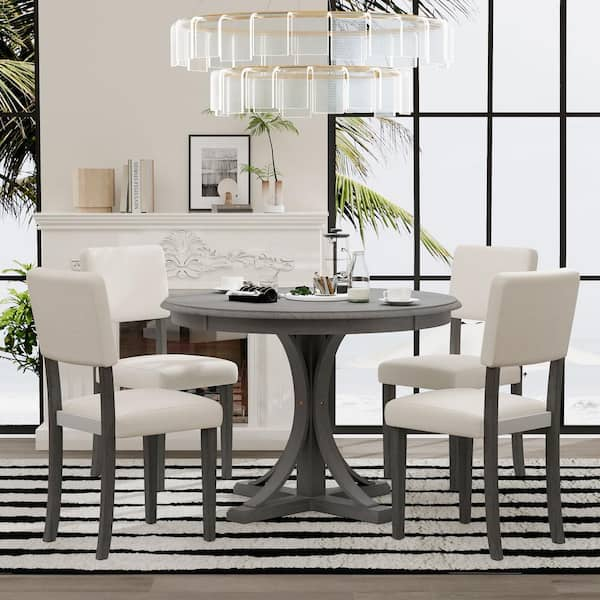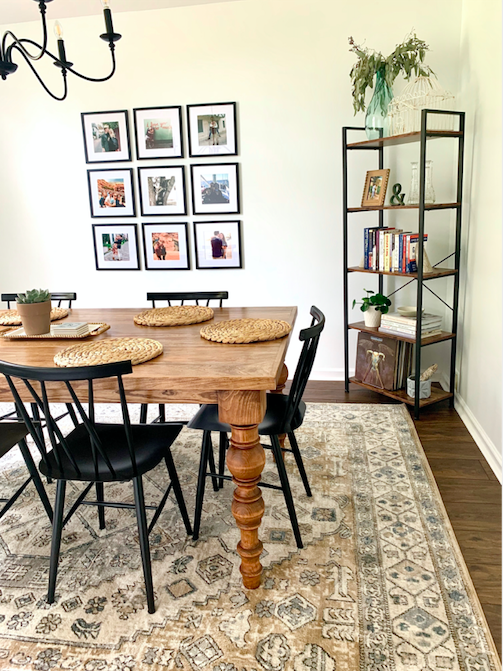Specialist Tips for Setting Up Eating Area Table Legs for Maximum Stability
When it comes to setting up dining-room table legs, accomplishing maximum security is critical for both performance and appearances. The procedure begins with choosing the right materials and equipment, followed by precise alignment and factor to consider of weight circulation. Each action plays a crucial function in making sure that the ended up item holds up against daily use without endangering safety or style integrity. Understanding the nuances of these components can considerably affect the total result. What particular methods can enhance security even better?
Pick the Right Legs
When choosing the appropriate legs for your dining-room table, it is vital to think about both capability and looks. The legs you pick will significantly affect the overall layout and stability of the table. Evaluate the table's intended usage; if you anticipate frequent events, stronger legs, such as those made from solid timber or metal, may be more appropriate, as they use raised toughness and support.
Standard eating tables commonly range from 28 to 30 inches in elevation, so make sure the legs straighten with this standard for convenience. Conical legs can include a modern touch, while turned legs could convey an extra classic aesthetic.

Select Appropriate Hardware
How can the right equipment enhance the security and long life of your dining-room table? The selection of ideal equipment is vital to ensuring that the legs of your table are safely attached and able to withstand normal use. Top notch screws, bolts, and brackets give the necessary toughness to sustain the weight of the table, along with any type of added lots placed upon it during dishes or celebrations.
When choosing screws, choose those made from long lasting products such as stainless steel or brass, which stand up to rust and preserve integrity over time. The length of the screws is equally crucial; they ought to penetrate deeply right into the table's framework without jeopardizing honesty. For bolted links, think about utilizing lock washing machines to prevent loosening as a result of vibration or activity.
In addition, making use of corner brackets can include added support, especially for larger tables or those with larger tops. These brackets disperse weight uniformly and assist maintain the table's form. Making sure that the equipment you choose is suitable for the certain materials of your table will even more enhance its total stability and long life, enabling you to enjoy your eating experience for years to come.
Ensure Appropriate Placement
Correct alignment of dining-room table legs is vital for both aesthetic allure and practical security. Misaligned legs can result in an irregular table top, which might not only be visually unattractive yet additionally jeopardize the table's functionality. To attain optimal placement, begin by determining the range from the table's edges to the leg attachment factors. This guarantees that each leg is positioned equidistant from the edges, developing a balanced look.
Use a degree throughout setup to validate that each leg is perpendicular to the tabletop. This step is crucial, as also minor disparities can intensify right into significant stability problems gradually. It is suggested to mark the preferred leg settings on the bottom of the table with a pencil or concealing tape before safeguarding them. This technique serves as an aesthetic overview, enabling modifications as needed.
Moreover, ascertain the positioning after the initial screws are tightened, as adjustments might be needed before fully securing the hardware. By prioritizing correct alignment, you not just enhance view it now the table's total design yet additionally ensure that it continues to be functional and steady for years to find.

Consider Weight Distribution
After guaranteeing proper alignment of the dining-room table legs, it is very important to consider weight distribution to boost stability and functionality. dining room table legs. Correct weight circulation is essential in stopping tottering and making certain that the table can sustain its desired tons without risk of tipping or collapsing
When positioning the legs, ensure they are positioned at equivalent distances from the center of the table to uniformly disperse the weight why not find out more throughout the structure. Consider the weight of the table top and any kind of things that will often rest on it, such as tabletop devices or decorative pieces. Tables with larger surface areas need to ideally have legs positioned closer to the corners, as this makes the most of the base of assistance and lessens the threat of instability.
In addition, if the table is meant for use in a high-traffic area, consider making use of heavier materials for the legs or adding supporting aspects, such as cross-bracing or a reduced shelf - dining room table legs. These changes can assist maintain balance and protect against changing throughout use. Inevitably, a well-considered weight distribution strategy will dramatically enhance the table's overall efficiency, ensuring it continues to be a attractive and useful focal point for your dining area
Examination Security Before Use
Testing the security of the dining space table before use is a crucial action that ought to not be forgotten. Making certain that the table is stable and protected can prevent crashes and prolong the lifespan of the furnishings. Begin by applying mild pressure to various factors on the table surface area. Press down on the center and afterwards along the sides, observing any wobbling or moving. Identify the legs or joints that may require adjustment. if the table reveals instability.
Following, examine that all fasteners and screws are tightened properly. Loose connections can cause instability and prospective damage with time. If necessary, make use YOURURL.com of timber glue on joints to improve stability, ensuring to allow appropriate drying out time.

Final Thought
In conclusion, the setup of dining-room table legs needs mindful factor to consider of materials, hardware, placement, and weight distribution to achieve optimum stability. By selecting high-quality fasteners and tough legs, guaranteeing exact placement, and dispersing weight equally, the structural integrity of the table can be substantially enhanced. Conducting a stability test before routine usage even more guarantees that the table will endure day-to-day pressures, thus providing a reliable and secure eating experience.
When it comes to setting up eating space table legs, accomplishing maximum stability is paramount for both functionality and looks. The legs you select will substantially influence the total style and security of the table (dining room table legs). Common dining tables typically range from 28 to 30 inches in elevation, so ensure the legs line up with this criterion for convenience.Proper placement of dining area table legs is important for both visual allure and functional stability.In final thought, the installation of eating area table legs requires mindful factor to consider of products, weight, positioning, and equipment circulation to achieve maximum security